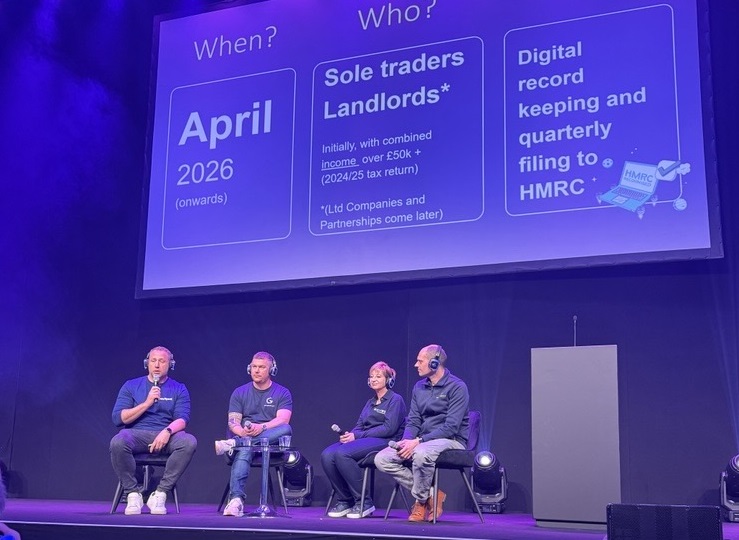MTD for Income Tax: ready or not?
The timeline is fixed. By April 2026, Making Tax Digital for Income Tax will be mandatory for many sole traders and landlords. But judging by the tone of discussion at Digital Accountancy Show 2025, readiness remains inconsistent—and, in some firms and client bases, worryingly low.
During a main stage panel moderated by Tony Stevenson, Senior Digital Enablement Manager at FreeAgent, three digital leaders from UK accountancy firms—Stuart Pedlar (Westcotts), Russell Frayne (Gravita), and Shawn McIndoe (Dains Accountants)—shared front-line insight into how practices are preparing for the transition.
Their consensus? MTD for Income Tax is not just a software project. It’s a behavioural challenge, an operational rethink, and a profitability puzzle all in one.
When asked how they’re managing client behaviour change, all three panellists pointed to the same issue: inconsistency. Pedlar explained that “some embrace the change, others act like it’s not even there,” prompting his firm to focus on proactive communication—“giving them guidance and knowledge” early.
Frayne noted that clients need more than just instructions—they need to understand the rationale. “Help them see the how and the why,” he said. “Clients have responsibilities now. We need to make that clear.”
McIndoe was more blunt: “Some will need handholding. Some don’t want to deal with it at all, no matter the cost.”
Stevenson advised a different starting point: “Don’t begin with the hardest clients—start with those who are open. Show success first, and let others follow. Sometimes fear of missing out can be the best motivator.”

The panel also highlighted the importance of internal preparation, particularly around training. For Pedlar, the approach is to equip staff with the right tools and resources—“training, webinars, info packs”—so they can confidently support clients.
McIndoe added that technical fluency around software is essential. Frayne recommended a layered model: give everyone general awareness but build a “champion group” inside the firm who can act as go-to problem solvers.
There was also a clear emphasis on demystifying the tech. “Let your team play around with the tools first,” said Pedlar. “That way, they’ll understand the pain points clients will face, and be better prepared to help.”
Frayne echoed the sentiment, but pointed to a deeper concern: “For most firms, it’s not just a compliance issue—it’s a resource and scalability issue. The tech is the enabler, not the answer.”
Could MTD ITSA actually become a revenue driver for firms? That question drew a mixed response. Pedlar argued that the shift could open doors to advisory work, especially as clients need more frequent touchpoints.
McIndoe noted that some clients will simply want to offload the entire process—and will “pay whatever it takes” to avoid dealing with it themselves.
Frayne, however, offered a more grounded take: “Nobody really knows how this will be priced yet. It depends on engagement. The market will dictate what we can charge.”
What’s clear is that treating MTD purely as a compliance burden is a missed opportunity—and a potentially costly one. As Frayne put it: “There’s a cost to doing nothing.”
MTD for Income Tax may not be optional, but how firms approach it absolutely is. And if this panel was any indication, the firms willing to tackle client behaviour, team readiness, and process overhaul in parallel are the ones most likely to turn regulation into return.